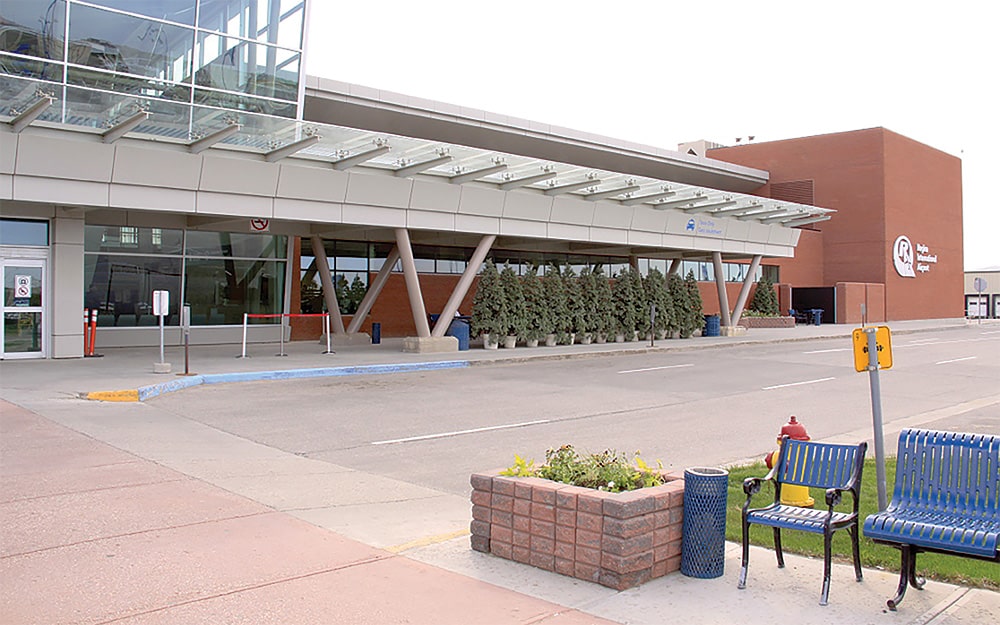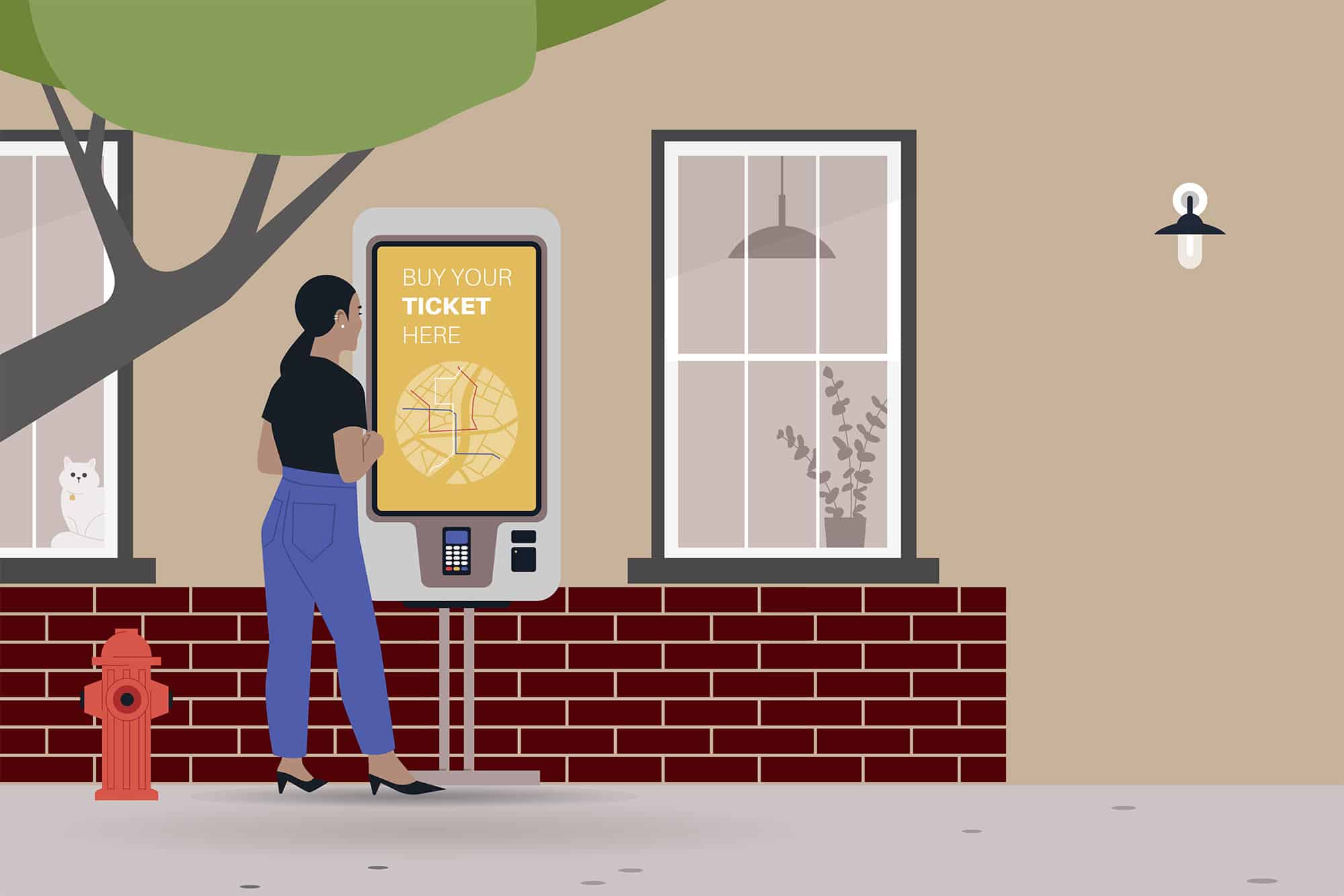
More…True Stories from the Quirky World of Parking
A Review of the Newest Book from Larry J. Cohen,
Share:
Share:

P arking is an extraordinarily important asset for airports. From a customer service perspective, parking is a vital service for travelers, who are often in a rush to park and get into the terminal to catch a plane. At the end of the trip, these same travelers are often tired and anxious to get home. When it comes to parking, the most important thing airport parking managers can do is get travelers in and out of garages and lots as quickly as possible, without hassle.
As important as parking is to travelers, it’s just as important to the airports at which they are located. For many airports, parking is the second most important source of revenue, after gate fees. On average, car parking and ground transportation revenue provides 19 percent of all airport revenue, or about $3.49 billion annually in the U.S. alone.
Of course, we live in the age of automated parking. Automation was intended to make parking more customer friendly, not to mention more manageable. For the most part, it has—and does. But there will always be occasions when things don’t go as planned, or when technology doesn’t work as it should. Many parking owners have found that that’s when a human touch is needed.
Regina International Airport, which expects to serve about one million passengers this year, experienced issues in the past with drivers encountering delays entering and exiting at gates. The airport didn’t have 24/7 customer service and, as one airport official explained, “At times, parkers would be stuck in the lot anywhere from 30 to 45 minutes, waiting for a parking representative to let them out. This would result in some customers ramming the gates, lifting them themselves, and causing damage to the parking equipment.”

Obviously, this situation was a problem from a customer service point of view. When airports don’t have a good parking experience, they are much more likely to turn to satellite lots the next time they travel. Plus, when customers are damaging equipment out of frustration, repair and replacement costs can mount.
The solution for Regina International Airport was to partner with Parker Technology to implement a 24/7 customer service solution. Working closely with the airport’s parking operator, Parker implemented an API integration with the airport’s existing TIBA PARCS equipment, which provides Parker’s software platform access to information from TIBA’s platform.
“Because the new platform integrated seamlessly with the existing equipment, the cost of the upgrade was negligible,” said James Virgie, Regional Manager of Platinum Parking Canada, the airport’s parking operator. “We didn’t have to buy new equipment and the entire integration only took a couple of weeks.”
The integration improves efficiencies for the handling of calls from the airport’s seven entry lanes and eight exit lanes in its short-term, long-term, overflow, and employee parking garages and lots. Additionally, the system allows customers to pay for parking at terminals inside the parking garage, before getting into their vehicles.
With the integration, drivers who experience difficulties entering or exiting parking facilities can push a button and speak directly with customer service staff who can troubleshoot misread tickets, help drivers navigate the payment process if they are having trouble, calculate fees, and send customers electronic receipts.
Most customer problems are easily resolved. Customers usually just need someone to walk them through the process when they lose a ticket, don’t know where to put the ticket, or can’t get the systems to read their credit card. About 3% of parking customers experience a problem that they need help with, and 85% of the time, people press the help button because they are confused. Customer service platforms make representatives available to help ease their confusion and walk them through the process. Most issues can be resolved in just 30 seconds.
In preparation for the Regina International Airport launch, an implementation team worked to develop responses to common issues that are likely to arise. All this data was entered into the new software platform, which acts as a workflow management system, so that customer service representatives have guidance on how to help customers insert their tickets properly, what to do if the equipment malfunctions, what the airport’s policy is on towing vehicles, and when it’s ok to just open the gate.
When a new issue arises, representatives figure out how to best handle the situation, then create a rule or concept that gets implemented into the system. When that situation arises again, the customer service representative can see the new rule and answer that customer within a few seconds.
Because the new platform contains information for all 870+ facilities, from across its customer base, all in one place, in a standardized way, no additional training was needed with the onboarding of the airport. The business rules guide customer service representatives on how to handle any situation. These issues and resolutions are tracked in real-time, and rules and responses can be adjusted quickly if necessary.
Data is an essential element of any parking facility’s operation. Typically, parking managers only have access to utilization data outlining how many people park in a certain garage and which times or days are busiest. This is certainly important information, but it doesn’t tell managers anything about their customers’ experiences. Customer service platforms are set up to fill that gap.
The cloud-based platform tracks all calls in a dashboard, allowing airport officials and operators to review call recordings; track how many calls came in, when, and from which equipment; and hear customer service representatives resolve situations. This allows airport executives and the operator to understand how frequently there are problems and what’s causing those problems.
The data that’s produced helps identify trends, such as when people forget their parking passes, whether customers tend to have similar frequent issues with the equipment, or whether there’s equipment that isn’t functioning properly. This information can then be used to determine whether action should be taken, such as repairing or replacing equipment or revising communications with customers about how to use the equipment. This feedback can be used to monitor the performance of customer service representatives.
From a purely customer service perspective, the addition of customer service technology has been a success. And it has also helped the airport’s bottom line. When problems at gates are resolved successfully, operators don’t need to lift gates just to get queues moving again. Each time a gate-lift occurs, the airport is losing fees from that parking stay. If it happens dozens—or even hundreds—of times a day, those losses add up over time. The customer service technology eliminates these unnecessary losses. In fact, since introducing the technology, parking revenues have risen each month.
“The technology is allowing the airport to capture revenue that had been lost in the past,” said Virgie. “It’s not unusual for travelers to misplace their tickets during their travels, but now when this happens, the technology can scan the driver’s license plates to retrieve the information about their parking stay, determine when the customer entered, and collect the appropriate fee.”
And according to airport executives, the addition of the technology is having a more traditional financial impact. Because parkers are happier with their parking experiences, the airport is seeing more repeat customers in airport parking facilities.
“Dissatisfied customers no longer come to the Airport Authority with complaints, which is a very good litmus test for how parking is performing,” said Justin Reves, Manager of Customer Experience and Marketing for the Regina Airport Authority. “We’ve seen a marked increase in the number of people choosing to park in our long-term parking.” ◆
Bill Smith is a publicist and business writer specializing in the parking industry.
stock.adobe.com / top dog / adimas

A Review of the Newest Book from Larry J. Cohen,

Innovations in AI, IoT, and 5G are set to revolutionize

Learn what the experts have to say.

Self-Service Kiosks and the Democratization of Digital Services
Parking & Mobility is IPMI’s flagship publication, covering the news, trends, analysis, technologies, and people of the parking and mobility industry, and how it affects and influences communities around the world.
| Cookie | Duration | Description |
|---|---|---|
| cookielawinfo-checkbox-advertisement | 1 year | Set by the GDPR Cookie Consent plugin, this cookie is used to record the user consent for the cookies in the "Advertisement" category . |
| cookielawinfo-checkbox-analytics | 11 months | This cookie is set by GDPR Cookie Consent plugin. The cookie is used to store the user consent for the cookies in the category "Analytics". |
| cookielawinfo-checkbox-functional | 11 months | The cookie is set by GDPR cookie consent to record the user consent for the cookies in the category "Functional". |
| cookielawinfo-checkbox-necessary | 11 months | This cookie is set by GDPR Cookie Consent plugin. The cookies is used to store the user consent for the cookies in the category "Necessary". |
| cookielawinfo-checkbox-others | 11 months | This cookie is set by GDPR Cookie Consent plugin. The cookie is used to store the user consent for the cookies in the category "Other. |
| cookielawinfo-checkbox-performance | 11 months | This cookie is set by GDPR Cookie Consent plugin. The cookie is used to store the user consent for the cookies in the category "Performance". |
| CookieLawInfoConsent | 1 year | Records the default button state of the corresponding category & the status of CCPA. It works only in coordination with the primary cookie. |
| elementor | never | This cookie is used by the website's WordPress theme. It allows the website owner to implement or change the website's content in real-time. |
| viewed_cookie_policy | 11 months | The cookie is set by the GDPR Cookie Consent plugin and is used to store whether or not user has consented to the use of cookies. It does not store any personal data. |
| Cookie | Duration | Description |
|---|---|---|
| _ga | 2 years | The _ga cookie, installed by Google Analytics, calculates visitor, session and campaign data and also keeps track of site usage for the site's analytics report. The cookie stores information anonymously and assigns a randomly generated number to recognize unique visitors. |
| _ga_02PMHW8YWC | 2 years | This cookie is installed by Google Analytics. |
| _ga_LC0QJJHM3J | 2 years | This cookie is installed by Google Analytics. |
| _ga_V9KYTSBYT2 | 2 years | This cookie is installed by Google Analytics. |
| iutk | 5 months 27 days | This cookie is used by Issuu analytic system to gather information regarding visitor activity on Issuu products. |
| Cookie | Duration | Description |
|---|---|---|
| mc | 1 year 1 month | Quantserve sets the mc cookie to anonymously track user behaviour on the website. |
| Cookie | Duration | Description |
|---|---|---|
| ultp_view_1052 | 1 day | No description |
| ultp_view_1058 | 1 day | No description |
| ultp_view_1060 | 1 day | No description |
| ultp_view_1064 | 1 day | No description |
| ultp_view_1068 | 1 day | No description |
| ultp_view_1070 | 1 day | No description |
| ultp_view_1072 | 1 day | No description |
| ultp_view_1078 | 1 day | No description |
| ultp_view_1082 | 1 day | No description |
| ultp_view_1088 | 1 day | No description |
| ultp_view_1100 | 1 day | No description |
| ultp_view_1103 | 1 day | No description |
| ultp_view_1114 | 1 day | No description |
| ultp_view_1118 | 1 day | No description |
| ultp_view_1122 | 1 day | No description |
| ultp_view_1125 | 1 day | No description |
| ultp_view_1130 | 1 day | No description |
| ultp_view_1132 | 1 day | No description |
| ultp_view_1135 | 1 day | No description |
| ultp_view_1541 | 1 day | No description |
| ultp_view_1554 | 1 day | No description |
| ultp_view_1557 | 1 day | No description |
| ultp_view_1560 | 1 day | No description |
| ultp_view_1563 | 1 day | No description |
| ultp_view_1568 | 1 day | No description |
| ultp_view_1572 | 1 day | No description |
| ultp_view_1576 | 1 day | No description |
| ultp_view_1580 | 1 day | No description |
| ultp_view_2305 | 1 day | No description |
| ultp_view_2321 | 1 day | No description |
| ultp_view_2338 | 1 day | No description |
| ultp_view_2342 | 1 day | No description |
| ultp_view_259 | 1 day | No description |
| ultp_view_270 | 1 day | No description |
| ultp_view_275 | 1 day | No description |
| ultp_view_286 | 1 day | No description |
| ultp_view_3074 | 1 day | No description |
| ultp_view_3115 | 1 day | No description |
| ultp_view_3334 | 1 day | No description |
| ultp_view_3336 | 1 day | No description |
| ultp_view_3338 | 1 day | No description |
| ultp_view_3340 | 1 day | No description |
| ultp_view_3346 | 1 day | No description |
| ultp_view_3354 | 1 day | No description |
| ultp_view_3361 | 1 day | No description |
| ultp_view_3367 | 1 day | No description |
| ultp_view_365 | 1 day | No description |
| ultp_view_367 | 1 day | No description |
| ultp_view_38 | 1 day | No description |
| ultp_view_3846 | 1 day | No description |